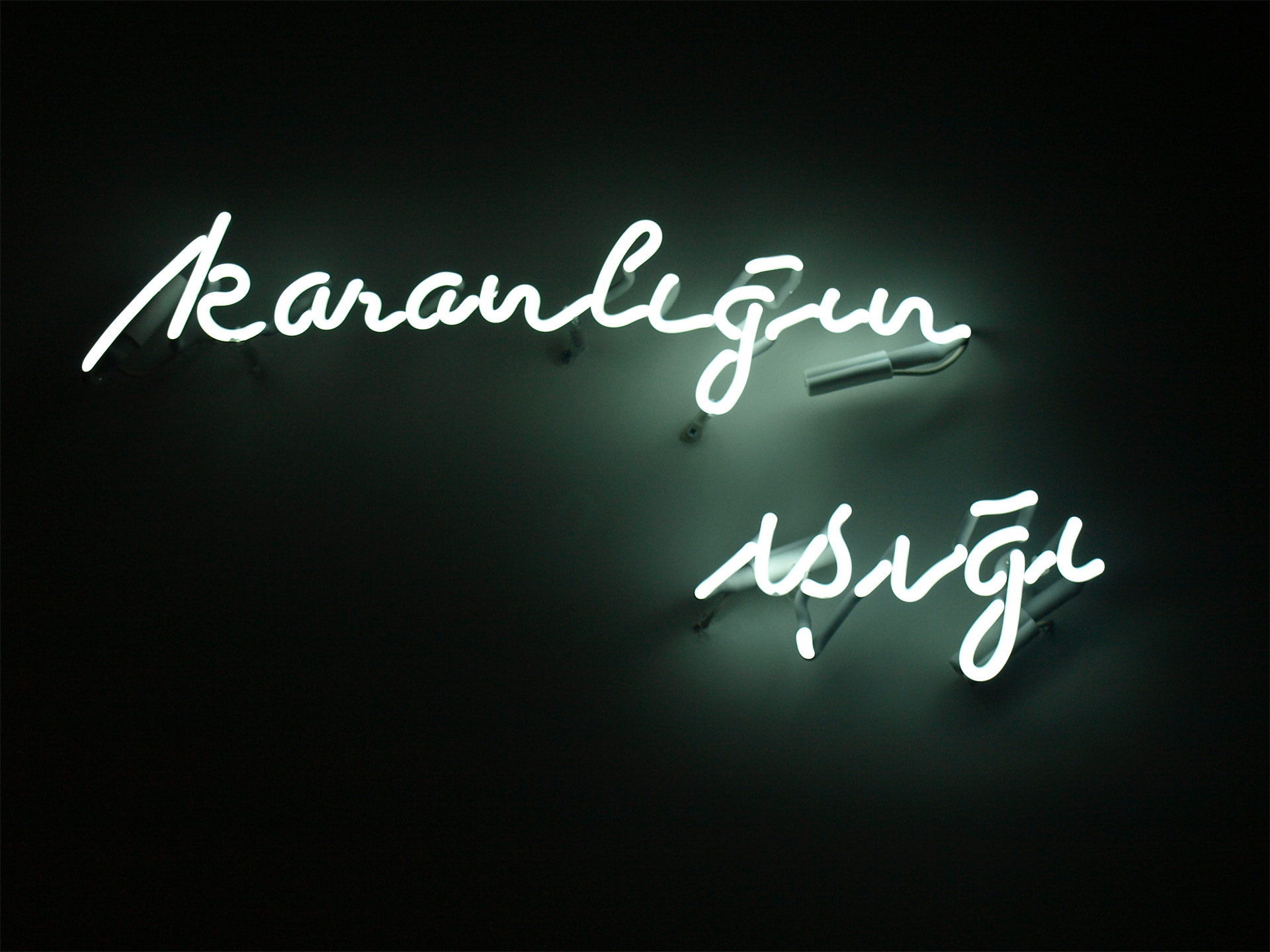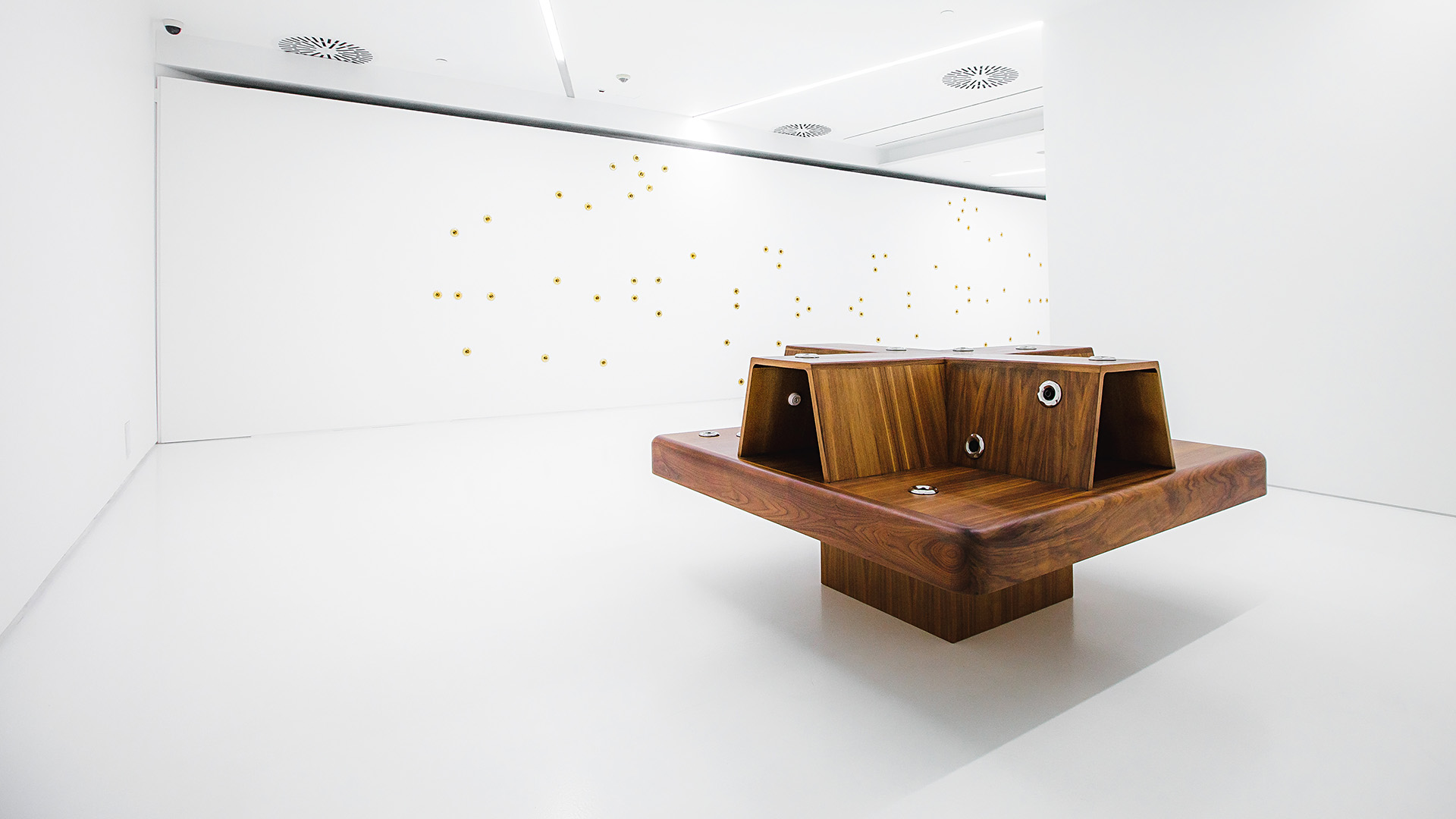Blog
Those discerned by words, in the light of darkness
27 January 2021 Wed
The neon text-image-sculpture of Sarkis, The Light of Darkness (2010) featured in the Borusan Contemporary Art Collection, diffuses a persistent light that embodies dependence, independence, immunity, consecution and, commitment.

EVRİM ALTUĞ
evrimaltug@gmail.com
With two words in Turkish, written in lowercase and alluding to a hand script, Sarkis sustains his healing, mystical, activist attitude, which rubs off on all his works - an attitude that evokes the spirit of his friend Joseph Beuys.
This white-light, by which the artist injects the composure and the intensity of a Japanese haiku to the mortal life, draws its power of expression and honesty from the very regnant and profound darkness that surrounds it.
The script illuminates only with the platonic meaning laid within by (s)he who can unravel it linguistically. And in that interim moment, it oozes a white hypnosis.
Who do we wait for in The Light of Darkness?
What right do we have to expect anything from The Light of Darkness?
When and in which circumstance do our words and our eyes become accustomed to The Light of Darkness, that they begin to grasp it, dismantling and acknowledging it like a language?
Is standing up against this work and having the nerve to appear before it, a communion of insistence on confrontation and remembrance, or a camaraderie of suffering?

Sarkis, The Light of Darkness, 2010.
Neon, 23 x 60 cm.
Does The Light of Darkness reduce or increase the rigor of ripples created by the stone thrown at the well of egotism (let us remember Narcissus) in the mind of its onlooker?
Positioning us as viewers-activators, The Light of Darkness sees us in its own historical light. It saves us from the darkness in the very same breath which blinds us and puts us to shame with its radiating awareness.
Perhaps Sarkis pays the bail of every single one of us with The Light of Darkness, which bespeaks of the official memory’s bureaucratic, whining whiteness that is as solemn as a morgue. By reducing the inventory of existence to two words, he dispels the mold, the curse of darkness. Ludwig Wittgenstein 1 , who notes that “the world consists of facts and not of things” in the preface of his opus, seems to incline towards the same idea: “Whereof one cannot speak, thereof must one be silent.”
The Light of Darkness is an act of confrontation that relies not on the light but on the scorching, pitch-black darkness of obliviousness which bears imminent fires. It requires from the viewers a collective confidentiality, an awareness regarding the certain indiscernibility and intimacy that permeates a good deal of Sarkis’ works.
I don’t know what other eyes would discern. But every time I see it, The Light of Darkness calls back to my mind and to my heart, that restless dove who took wings to heaven from the doorstep of Sebat Apartmanı one January afternoon.
1- Wittgenstein, L., & Russell, B. (1922). Tractatus logico-philosophicus. London: Kegan Paul, Trench, Trubner & Co.
ABOUT THE WRITER
Evrim Altuğ studied at the Marmara University Fine Arts Faculty Cinema - Television Department and Istanbul Bilge University Communication Faculty Stage and Performing Arts Department (with a scholarship); he participated in the Design Culture and Administration Certificate Program. In 2003, he was one of the founding members during the relaunching of the International Art Critics Association - AICA Turkey. Altuğ was the president of the association for two terms and is still a member of the board. He writes on arts and culture across various print and digital media, including Art Unlimited, Gazete Duvar, Hürriyet Kitap-Sanat and Arkas News. He continues the program Yolgeçen on Açık Radyo with Rahmi Öğdül and he was selected for the writers’ program launched by SAHA in 2019. He continues his journalistic work on arts and culture as part of Açık Dergi on Açık Radyo, edited by İlksen Mavituna. Altuğ has recently been appointed the director of Zilberman Gallery Istanbul.



